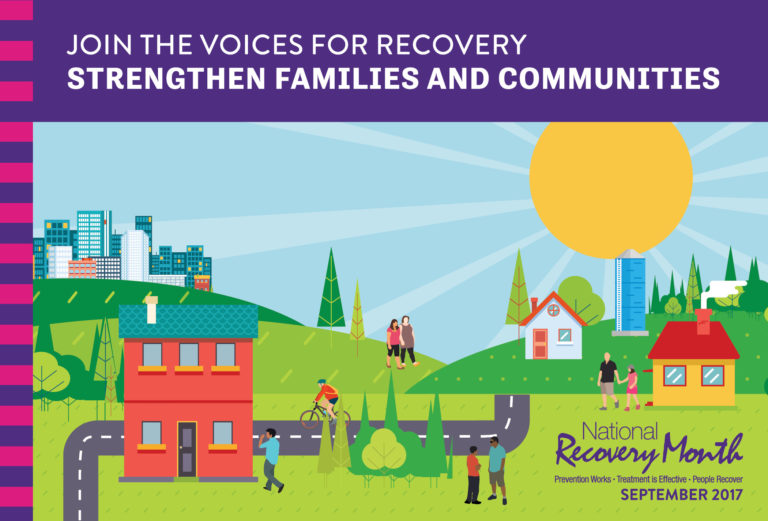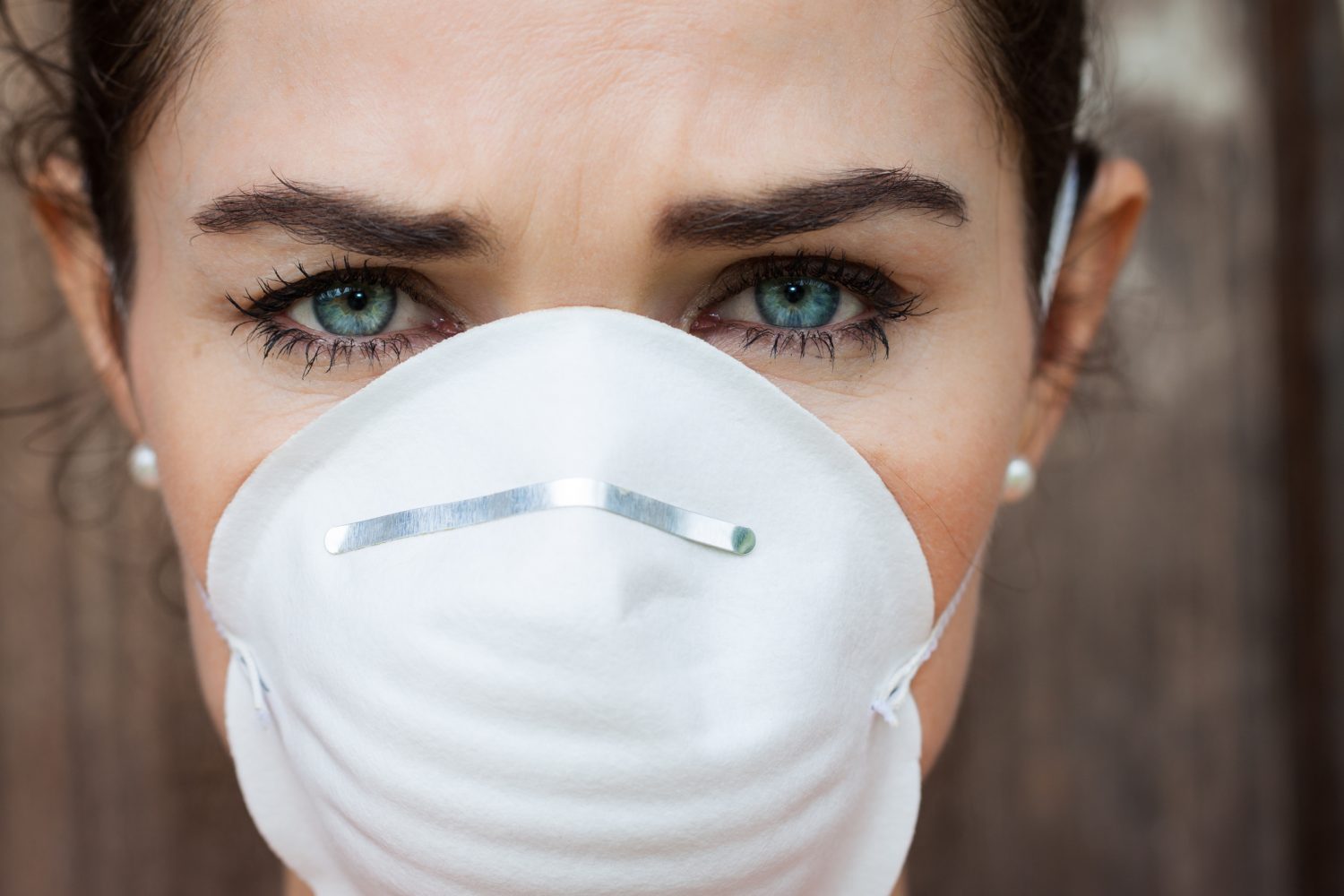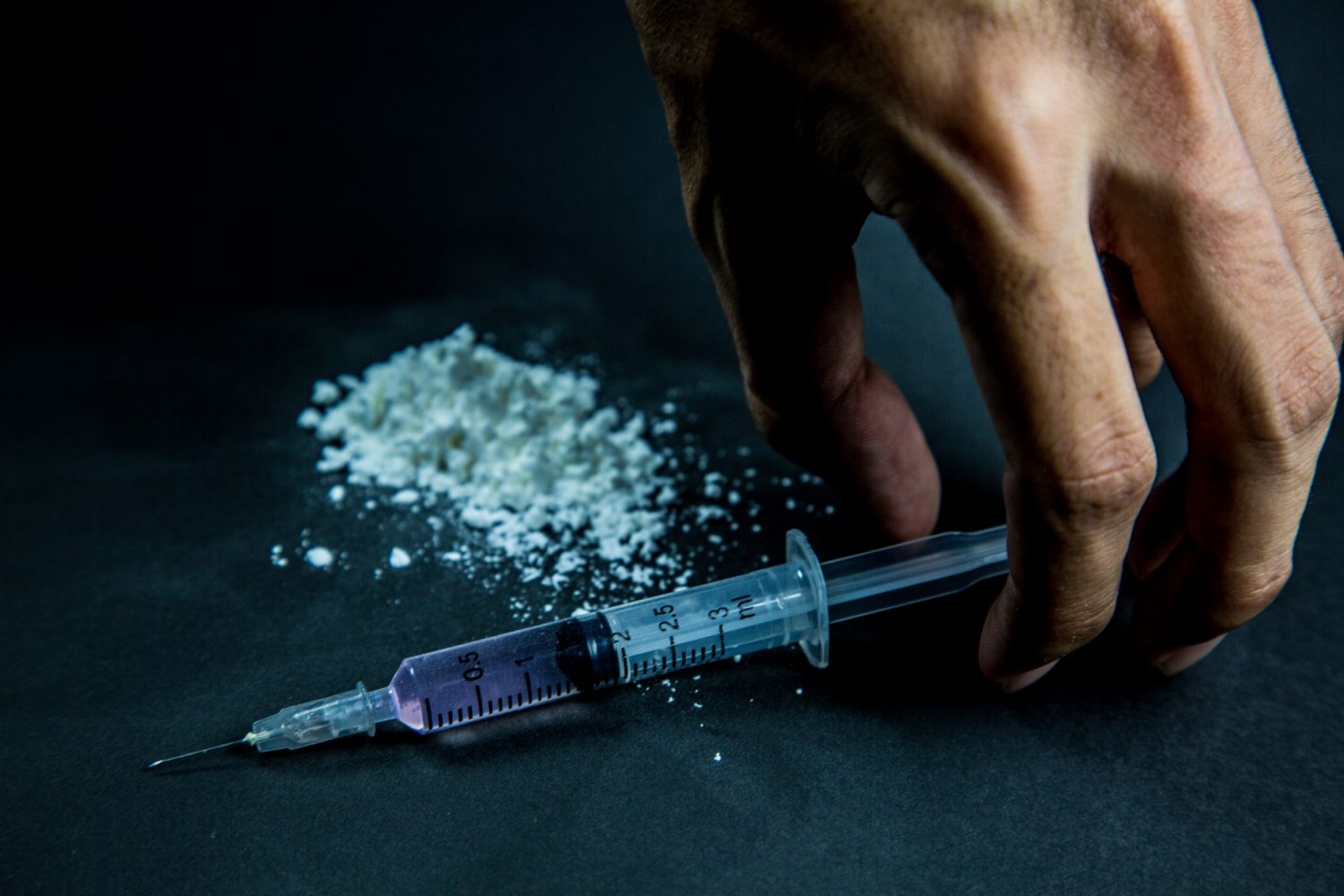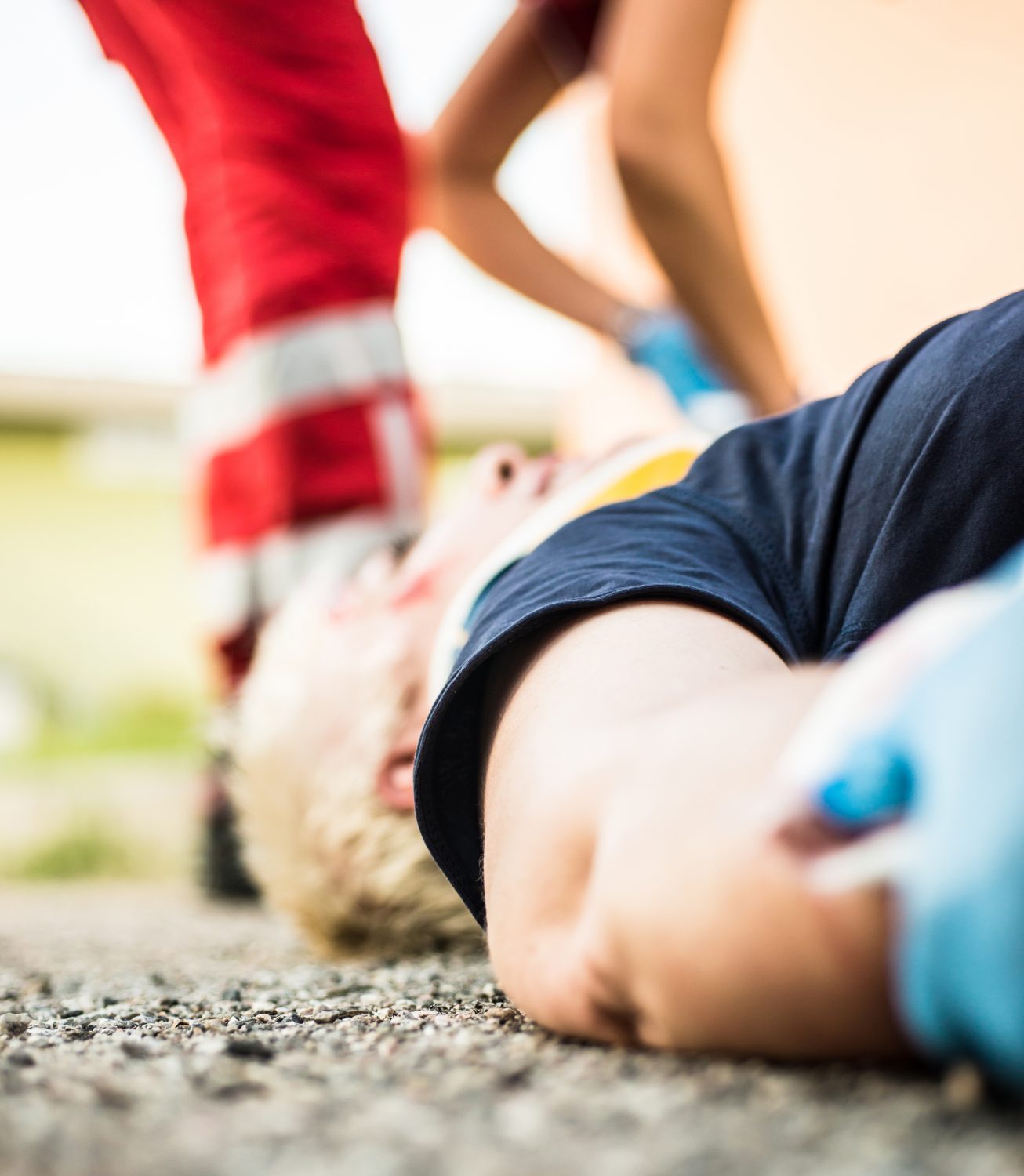by Sher Delva | Aug 18, 2017 | Addiction, Drug Abuse, Family, Mental Health, Mood Disorders

We are pleased to announce Dug and Heidi McGuirk of Palm Healthcare as special keynote speakers for this year’s Broward Recovery Month Event!
The Broward Recovery Event will honor special individuals in the community who are powerhouses for the recovery community.
 Dug McGuirk is an accomplished entrepreneur and inspirational speaker. As co-founder of Revolutionary Health, Dug is committed to transforming lives. Dug McGuirk is the VP of Training and Development for Palm Healthcare Company where he regularly teaches a variety of transformative classes.
Dug McGuirk is an accomplished entrepreneur and inspirational speaker. As co-founder of Revolutionary Health, Dug is committed to transforming lives. Dug McGuirk is the VP of Training and Development for Palm Healthcare Company where he regularly teaches a variety of transformative classes.
 Heidi McGuirk is an author, co-founder of Revolutionary Health, Master Relationship Coach and addiction professional who teaches several weekly classes at Palm Healthcare.She is the creator and CEO of Love Coach Heidi where she helps recovering co-dependent women learn how to love themselves first.
Heidi McGuirk is an author, co-founder of Revolutionary Health, Master Relationship Coach and addiction professional who teaches several weekly classes at Palm Healthcare.She is the creator and CEO of Love Coach Heidi where she helps recovering co-dependent women learn how to love themselves first.
Dug and Heidi both created an amazing family program for the families of addicted loved ones. The Family Program helps families navigate addiction and understand how to help their loved one instead of hurting them.
We would like to offer you the FREE GIFT of a checklist to help decipher if you are helping or hurting a loved one who is struggling with addiction.
Click for FREE GIFT
We encourage all to come out and support them in this year’s Broward Recovery Month event. Even if you are not familiar with the incredible work Dug and Heidi McGuirk do, you will gain so much from attending the event and hearing their words of inspiration and hope.
Here are the details:
Broward National Recovery Month Event:
When: September 9th from 11-3
Where: The War Memorial Museum
800 NE 8th St, Fort Lauderdale, FL 33304
What: Join special keynote speakers Dug and Heidi McGuirk for FREE food, fun, and inspiration.
This year’s theme for Recovery Month 2017 is Join the Voices for Recovery: Strengthen Families and Communities.
September marks the 27th anniversary of National Recovery Month. The purpose of National Recovery Month is to increase awareness and understanding of mental and substance use disorder and celebrate people who DO recover.
The 2017 theme highlights the value of family and community support. Recovery Month invites individuals in recovery and their family members to share their personal stories and successes to inspire and encourage others.
Broward Recovery Month will be an exciting, INSPIRING event for all to attend. You can make a difference by joining in the Recovery Month Effort.
Support is crucial when it comes to addiction recovery.
Events that support recovery help encourage and inspire those struggling with their addiction, as well as give an outlet to those who have had amazing success in recovery. These events were created to join the recovery community together and celebrate those who have achieved success in their journey.
Broward’s Recovery Month Celebration “honors outstanding individuals who have made significant contributions to helping people in our county remain sober.”
Overall, National Recovery Month helps instill a sense of belonging, safety, and security to the recovery community. This year, we encourage you to participate in events in your community that support addiction recovery. There are events happening nationwide for you to attend.
Whether you are new to recovery or have years of sobriety under your belt, everyone can benefit from attending major events like this. Families of addicted loved ones are strongly encouraged to attend because this year’s National Recovery Month specifically focuses on strengthening families. Families know more than anyone that addiction does not affect just the addict, it affects everyone around them too.
Millions of lives have been transformed through recovery. Often, these successes go unnoticed. Recovery Month is an excellent way for everyone to celebrate these accomplishments.
Addiction affects everyone, not just the addict. Therefore, if you or someone you know is currently struggling, please reach out. We want to help. Do not wait. Please call toll-free now.
CALL NOW 1-888-922-5398
by Justin Mckibben | Aug 14, 2017 | Death, Drug Abuse, Fentanyl, Heroin, Naloxone, Narcan, Opioids, Prescription Drugs

As we have seen time and time again, the opioid epidemic all across America has not been confined to one substance. It takes the shape of prescription painkillers, illicit heroin and even the more potent synthetic opioids like fentanyl. With the gradual progression of this poisonous outbreak, we have seen the stakes get higher and higher. Prescription opioids contributed to a growing population of heroin users. Dealers lacing heroin with synthetics like fentanyl led to higher overdose rates. Then the highly dangerous, frequently lethal carfentanil was added to the mix and now just being around the drugs can almost kill you.
With the addition of fentanyl and carfentanil to the illicit drug world comes a very real and potentially lethal new threat- secondary exposure overdose.
What is Secondary Exposure?
Secondary exposure is also referred to as secondary contamination or second-hand exposure. It is a term usually used with things like asbestos poisoning or mesothelioma. Sometimes it is even used to describe the effects of radiation. It is when people come into contact with gasses or substances that can be absorbed into the body and do very real damage.
The most common comparison you could make is to second-hand smoke, which is when people smoking cigarettes expose others to the toxic gas they and the cigarette release into the air. Second-hand smoke can cause very real health problems, including some cancers. The most terrible aspect of it being that the individual who gets sick doesn’t even have to smoke themselves.
With drug use secondary exposure overdose has now become a real risk thanks to synthetic opioids. Law enforcement and other officials tell us that some of these dangerous substances must be handled with the utmost caution. The news coming out of Ohio this week is just another example of how hazardous these drugs have become.
Ohio Nurses Experience Secondary Exposure Overdose
At Affinity Medical Center, a hospital in Massilion, Ohio, three nurses helped treat an overdose patient. After cleaning the room where the individual was treated, the three nurses were overcome by secondary exposure. They got sick and shortly after lost consciousness.
Detective Shaun Dadisman states,
“They were cleaning up the room and started to feel sick. And then that left them waking up in a hospital bed,”
According to the investigators in this case, the three nurses were treated with Narcan. The opioid overdose antidote Narcan is the brand name for Naloxone, which is used to reverse the effects of opioids on the respiratory system. The local law enforcement believe the substance the nurses were exposed to was fentanyl. Thankfully, all three nurses are said to have recovered.
A union representing nurses at the hospital intends to meet with hospital officials to review protocols for environmental contamination. A spokeswoman from the hospital states that the institution does have effective policies, which isn’t out of the question.
Police Officer Needs Narcan after Secondary Exposure Overdose
Just this summer, a police officer in a very similar situation almost died from an accidental overdose due to secondary exposure. Officer Chris Green was responding to a drug call when the incident occurred. The drug he came in contact with at the time was so powerful that even though officer Green said he was wearing gloves and a mask as he searched a suspect’s car, he still ended up being severely impacted by the substance. Merely by ending up with a white substance on his shirt officer Green needed to be revived with not just one, but multiple doses of Narcan.
How Does Secondary Exposure Overdose Happen?
Detective Shaun Dadisman spoke more about the dangers of opioid overdose through secondary exposure. Dadisman states,
“It shuts down your breathing. It shuts down your system so you get to the point where you’re not breathing on your own. And you need that boost and that Narcan is what takes that away so it helps you to recover quickly,”
Fentanyl and other opioids like carfentanil present a whole new level of danger concerning secondary exposure. The drugs are so intoxicating that law enforcement and medical personnel are now forced to come up with new policies and protocols just to handle an individual who may be overdosing on these drugs to protect themselves and others. Dadisman stated,
“I was actually stuck by a needle from an individual on a heroin overdose, so I had to run through all of the testing myself,”
The opioid epidemic now doesn’t just present an elevate risk of death to those who are using these drugs. Opioid abuse now poses a very real and deadly danger to those who work to save the lives of users every day. The greatest danger some of these drugs prevent is that of the unknown. As Dadisman points out,
“I think there will be continued changes – gloves, masks. And the problem with our first responders, police officers and our nurses and stuff, is you don’t know immediately what you’re dealing with. After the fact, you may know, but it may be too late.”
So now every day these synthetic opioid drugs don’t just threaten the lives of people who consume them, whether knowingly or not, but also the people closest to them.
So what can be said about secondary exposure overdose? Well, it is safe to say that with some of the most powerful drugs that are out there simply getting some on your skin or breathing it in, even on accident, can cause life-threatening illness. While hopefully this concept does not start a panic, it is a reality that more people should probably be aware of. Whether people are leaving the drug around others, consuming the drug in public places or being revived by loved ones and first responders, the fact is the drugs are stronger and more life-threatening than ever. The fact that a dose of Narcan might not save someone on the first shot should be enough to push for more awareness and more focus on finding a way to fight back.
So, what more can be done about the possibility of secondary exposure overdose?
If you or someone you love is struggling with opioids do not hesitate to get help. The rates for overdoses and opioid-related deaths are far too high to keep gambling with your life. Protect your loved ones and your future. If you or someone you love is struggling, please call toll-free now. We want to help.
CALL NOW 1-888-922-5398
by staff | Aug 8, 2017 | Death, Fentanyl, Heroin, Naloxone, Narcan, Opioids

If you believe you or someone else is experiencing fentanyl overdose symptoms, please call 911 right away. Fentanyl is an extremely potent potentially fatal drug and should not be underestimated.
Fentanyl, also known as fentanil, is an incredibly potent synthetic opioid pain medication with a rapid onset and short duration of action. This drug is considered to be around 50 to 100 times more potent than morphine, while some fentanyl analogues such as carfentali, which are designed to mimic the pharmacological effects of the original drug, may be as much as 10,000 times more potent than morphine. Fentanyl brand names include:
- Actiq
- Duragesic
- Fentora
- Sublimaze
Individuals who abuse opioids, particularly heroin, are more likely to ingest fentanyl, knowingly or unintentionally. This puts them at an even higher risk of overdose.
In 2015 alone, 33,091 people died due to overdose on opioids like fentanyl.
Learning how to recognize the indications of a fentanyl overdose and getting professional substance abuse treatment may save a life.
Fentanyl Overdose Symptoms: Side Effects of Fentanyl
As an extremely potent opioid drug, fentanyl is very carefully prescribed and dosed by medical professionals. Those who abuse fentanyl may use the drug outside of prescription guidelines or without a prescription altogether, which can drastically increase their risk of lethal overdose.
Fentanyl’s most common side effects of Fentanyl use include
- Asthenia(weakness)
- Diarrhea
- Nausea
- Constipation
- Dry mouth
- Somnolence
- Confusion
- Sweating
Some of the less common side effects of Fentanyl use include:
- Abdominal pain
- Anxiety
- Depression
- Anorexia and weight loss
- Headache
- Fatigue
- Dizziness
- Nervousness
- Hallucinations
- Flu-like symptoms
- Dyspepsia(indigestion)
- Dyspnea (shortness of breath)
- Hypoventilation
- Urinary retention abuse
Fentanyl Overdose Symptoms: Risks of abuse
With a powerful drug like fentanyl the risk of abuse is exceedingly high, especially considering the drug’s medical use is so limited to treating extreme cases. So when people take fentanyl in higher doses or more frequently than prescribed it of course elevates their risk for serious side effects and experiencing fentanyl overdose symptoms.
As far as recreational use, fentanyl is extremely dangerous. Using this drug in any way other than intended, such as snorting or injecting it, is not only illicit abuse of the chemical, but potentially life-threatening. In recent years drug dealers have been mixing fentanyl powder with heroin to increase potency or compensate for low-quality heroin. This illegally manufactured, non-pharmaceutical fentanyl cut into other substances caused an outbreak of overdose deaths in the United States and Canada over the past several years.
Combining fentanyl with other drugs can have effects that either compound the already severe side effects of fentanyl or contradict the effect and cause more chaos in the body. Using fentanyl with other substances is very hazardous, especially with drugs such as:
- Alcohol
- Stimulants
- Benzodiazepines
- Antidepressant medication
The Center for Disease Control and Prevention (CDC) conducted a study recently that showed:
- 82% of fentanyl overdose deaths involved illegally manufactured fentanyl
- Only 4% were suspected to originate from a prescription
National Forensic Laboratory Information System reported:
- 942 fentanyl seizures in 2013
- 3,344 fentanyl seizures in 2014
Fentanyl Overdose Symptoms: Signs to Look For
Being able to address a possible overdose means being able to recognize and understand some of the possible fentanyl overdose symptoms. While one of these may not be a definite indication, noticing a combination of symptoms may be a more serious issue.
A person experiencing fentanyl overdose symptoms may present with the following overdose signs:
- Pinpoint pupils
- Pale skin
- Nausea
- Choking sounds or gurgling/snoring noises
- Weak muscles
- Dizziness
- Confusion
- Extreme sleepiness
- Very low blood pressure
- Dangerously slowed or stopped breathing
- Blue skin tinge nails and lips
- Loss of consciousness
- Intensely slowed heart beat
- Coma
- Seizure
- Death
The effects of fentanyl overdose symptoms on an individual’s respiratory system and heart rate are the most serious relating to risk of death or permanent damage. Not only can this lead to coma or death, but even after surviving the overdose there can still be complications.
If not treated immediately, the impact of fentanyl overdose symptoms on the heart and respiratory system may cause residual problems such as permanent brain damage.
Fentanyl Overdose Symptoms: How Much Is Too Much?
It is difficult to determine the exact dose it would take for someone to experience fentanyl overdose symptoms. According to some medical professionals, 250 micograms of fentanyl might represent a lethal dose of fentanyl. However, most individual’s using heroin and other drugs are unaware that they have ingested the drug at all, let alone know how much fentanyl is in the doses.
At the end of the day, fentanyl overdose symptoms can vary depending on the individual, and the amount it takes to overdose will vary to. Some elements that impact the odds of overdosing includes:
- Other drugs taken
- Height
- Weight
- Age
- Physical condition
In the event of an overdose of fentanyl you should seek immediate emergency medical assistance. Some cases require several doses of Narcan (Naloxone), the opioid overdose antidote, to stabilize the individual suffering from an overdose. Even if you have access to Narcan or Naloxone yourself, always contact emergency medical services to get assistance, because when the antidote wears off the overdose could return, or there may be other severe complications.
Opiate medications and street drugs have done a great deal of damage these past few years. Synthetic opioids like fentanyl have raised the risks and increased the death rates in a big way. Far too many lives are ruined, or brought to an abrupt end, because of overdoses when there is real help out there. Don’t wait until after an overdose. If you or someone you love is struggling with substance abuse or addiction, please call toll-free now.
CALL NOW 1-888-922-5398
by staff | Aug 7, 2017 | Addiction Treatment, Detox, Drug Abuse, Recovery, Withdrawal

(This content is being used for illustrative purposes only; any person depicted in the content is a model)
Repeated and extended use of most drugs can cause physical dependence to develop quickly in the body, and while many people experience symptoms of dependence differently, once it has been established there are typically a number of uncomfortable or even painful adverse effects. Many of these side-effects, specifically withdrawal symptoms, happen when trying to discontinue use of the substance. Many refer to this period of getting off of drugs as the detox stage. Detoxing from some substances can be harder on the body than others, while some can actually become life-threatening. When attempting to get off of drugs one of the most commonly asked questions is- how long does it take to detox your body from drugs?
There is no one-size-fits-all answer to this question. Withdrawal symptoms can appear quicker and last longer, depending on the individual and the factors of their drug use.
How Long Does it Take to Detox Your Body from Drugs: Questions to Ask
Because not everyone is exactly the same, their body will react differently based on their own personal health and their own habits. Typically an individual will experience the most serious withdrawal symptoms in the first two weeks of detox, but there are so many things that contribute to how this experience will affect you.
Here are a few questions you may want to ask:
-
What is the drug?
Different drugs will have different detox periods because of how long they stay in the system.
-
How much do you usually take?
For those who take larger amounts, they increase the chances of the body building up more of a tolerance to the drug.
-
How often do you use the drug?
Someone taking a drug multiple times a day every day has a better chance of developing a stronger dependence quicker than someone who uses once every couple of days.
-
What is your metabolism like?
Of course something that impacts how long a drug stays in your body is your metabolism. The quicker your body burns through fat, nutrients and other resources the quicker the residual deposits of the drug in the body will dissipate.
-
Are you generally healthy?
Those who not only take care of themselves, but are healthier in general may have an easier detox experience than those who are already not healthy and more often ill. For each individual there are a number of personal health that impact how long a drug stays in the system, including:
- Height
- Weight
- Age
- Genetics
- Gender
- Body fat
- Health of the liver
- Kidney health
- Hydration
Many key organs are involved in the metabolism or elimination of many of the drugs you take, such as digestive organs, respiratory organs, liver and kidneys. Some studies have made rough estimate of how long withdrawals may last for certain substances. However one cannot guarantee a general timeline can tell how long detox will take accurately considering each individual’s own health and habits can make these timelines vary.
How Long Does it Take to Detox Your Body from Drugs: PAWS
Sometimes people don’t expect to experience withdrawals after a certain point because they think the body has already overcome its dependence, however there are other effects of drugs that can be a challenge.
Post-Acute Withdrawal Syndrome (or Protracted Withdrawal Syndrome) is often referred to as PAWS. This the second stage of withdrawal. PAWS causes recovering addicts and alcoholics to feel some symptoms of withdrawal long after the initial withdrawal phase is over. So you may have fewer physical symptoms, but there are much more emotional and psychological symptoms that can continue to bother you.
PAWS occurs because your brain chemistry is gradually returning to normal. As your brain heals without constant use of potent drugs, the levels of brain chemicals fluctuate as they approach the new equilibrium.
Common Post-Acute Withdrawal Symptoms include:
- Mood swings
- Anxiety
- Irritability
- Variable energy
- Low enthusiasm
- Variable concentration
- Disturbed sleep
PAWS can often mimic depression, and increases the risk of relapse. So while the body may start to feel more refreshed and the aches and pains of physical dependence may be getting better, the brain is still struggling.
How Long Does it Take to Detox Your Body from Drugs: Why Medical Detox Matters
Some people may ask how long does it take to detox your body from drugs because they want to try and detox at home. This may seem like a more convenient approach, but it is definitely not the safest or most effective way. Medical detox matters because it is not so simple to predict how long someone will experience withdrawals.
Because some may experience detoxing from drugs differently, having an experienced medical staff, along with addiction specialists creates a safer and more effective environment to detox. Medical detox provides a safe and secure space to get through this beginning difficult stage of recovery, while offering quality care and assistance to each individual and their needs.
The Palm Healthcare Company detox facility has a 24-hour medical and addiction professional staff to continuously evaluate individual progress and provide comprehensive support during this process. Our highly qualified specialists genuinely strive to make recovery possible for everyone who needs help. If your or someone you love is struggling with substance abuse or addiction, please call toll-free.
CALL NOW 1-888-922-5398
by Justin Mckibben | Aug 7, 2017 | Heroin, Methadone, Naloxone, Narcan, Opioids, Prescription Drugs

Narcan is a brand name for the opioid overdose antidote Naloxone hydrochloride. Technically speaking, the opioid antagonist is a synthetic congener of Oxymorphone that is structurally different in that the methyl group on the nitrogen atom is replaced by an allyl group. In the past couple years Narcan has gradually become a household name. With the opioid epidemic in America continuing to ravage many communities across the nation, Narcan has become one of the first lines of defense. For some people, while they know now what this powerful substance is, they are still unsure how to use Narcan to stop an opioid overdose.
NOTE: All instructions in this article come from the Harm Reduction Coalition website. You can also look for Narcan/Naloxone training in your area. Different brands may provide more specific instructions. Be sure to real labels and warnings on Narcan or Naloxone kits.
How to Use Narcan: More about Narcan
Narcan works by blocking the effects of opioids and can actually reverse an overdose in order to get medical attention to someone who is in need. The life-saving opiate antidote is used for the complete or partial reversal of opioid depression, including respiratory depression. An opioid overdose can cause breathing to slow down or stop completely, putting someone’s life in immediate danger. Some examples of opioid overdoses Narcan may be used to reverse include the drugs:
- Heroin
- Morphine
- Codeine
- Oxycodone
- Methadone
- Vicodin
One major plus is that Narcan has no euphoric effects and cannot get someone “high” so abuse is not an issue. The overdose antidote is essentially harmless if there are no opiods present in someone’s system. If given to a person who has not taken opioids, there will be no effect. Narcan can still be effective when alcohol or other drugs are present with opiates. However, some of the incredibly potent synthetic drugs such as Fentanyl and carfentanil have shown to be somewhat resistant to Narcan treatment, meaning those overdosing due to carfentanil require extra doses to be stabilized.
Administration to opioid-dependent individuals may cause symptoms of opioid withdrawal, including:
- Restlessness
- Agitation
- Nausea
- Vomiting
- Fast heart rate
- Sweating
There are other measures that can be taken to help ease these symptoms as well.
How to Use Narcan: Intravenous Infusion
The most rapid onset of action is achieved by intravenous administration, which is recommended in emergency situations. Narcan may be diluted for intravenous infusion in either:
- Normal saline
- 5% dextrose solutions
2 mg of Narcan mixed in 500 mL of either solution provides a concentration of 0.004 mg/mL. Narcan should not be mixed with preparations containing:
- Bisulfite
- Metabisulfite
- Long-chain or high molecular weight anions
- Any solution having an alkaline pH
No drug or chemical agent should be added to the mixture unless its effect on the chemical and physical stability of the solution has first been established. To use the injectable Narcan:
- If the person is not breathing perform rescue breathing for a few quick breaths.
- Use a long needle (called an IM or intramuscular needle) which about 1 – 1 ½ inch. NOTE: If there isn’t a big needle, a smaller needle is OK and inject under the skin, but big needles are better.
- Remove the pop off orange top from the vial
- Draw up 1cc (1cc=1mL=100u) of antidote into the syringe
- Inject into a muscle, the best being thighs, upper, outer quadrant of the butt, or shoulder. NOTE: Inject straight in to make sure to hit the muscle.
- After injection, continue rescue breathing 2-3 minutes.
- If there is no change in 2-3 minutes, administer another dose and continue to breathe for them.
NOTE: If the second dose of naloxone does not revive them, something else may be wrong— either it has been too long and the heart has already stopped, there are no opioids in their system, or the opioids are unusually strong and require more naloxone (such as Fentanyl or carfentanil).
For more information, you should be able to find instructions in the Narcan kit, or inquire when picking up a Narcan kit about any opportunities to receive more in-depth training.
How to Use Narcan: Nasal Spray
Another resource that has helped make huge progress in fighting opioid overdose death rates is the Narcan (or Naloxone) nasal spray kit. The variation has made training people to administer the overdose antidote much easier and much less dangerous. Without needles, the nasal spray system helps eliminate the issue of blood contamination.
According to instructions posted through the Harm Reduction Coalition, there are about 5 steps for how to use Narcan with nasal spray.
- If the individual is not breathing perform rescue breathing for a few quick breaths.
- Attach the nasal atomizer (applicator) to the needleless syringe and assemble the glass cartridge of naloxone.
- Tilt the head back and spray half of the naloxone up one side of the nose (1cc) and half up the other side of the nose (1cc).
- If there is no breathing or breathing continues to be shallow, continue to perform rescue breathing for them while waiting for the naloxone to take effect.
- If after about 3 to 5 minutes there is no change, administer another dose of naloxone and continue to breathe for them.
NOTE: If the second dose of naloxone does not revive them, something else is wrong—either it has been too long and the heart has already stopped, there are no opioids in their system, or the opioids are unusually strong and require more naloxone (such as Fentanyl or carfentanil).
Regardless of if you use an intravenous Narcan kit or a nasal spray kit, Narcan should never be used as substitute for emergency medical care. In the event of an opioid overdose one should always call 911 right away, even if the individual wakes up. Narcan can wear off between 30-90 minutes, while the effects of the opioids can last much longer. It is possible that after Narcan wears off the overdose can return.
Also look into Narcan training programs in your area.
How to Use Narcan: Get More Help
When someone has to be revived from an opioid overdose it can be a pretty clear cut indication that something needs to be done in order to help them stay safe.
Another difficult aspect of how to use Narcan is that naloxone can cause uncomfortable opioid withdrawals. Because Narcan blocks the action of opioids in the brain, people can wake up feeling withdrawals practically immediately and try to use again. Of course this could result in another overdose.
Beyond administering Narcan to save someone’s life, take this as an opportunity to seek resources and start a conversation about getting them the help they need. Preserving life is important, but saving a life by changing a life can make a world of difference. There are empowering and innovative addiction treatment programs that specialize in addressing this chronic, progressive and fatal substance use disorder. After surviving an overdose presenting someone with the opportunity to get treatment may be the best chance they get.
Holistic addiction treatment allows people who were once hopeless build the foundation of hope again. If you or someone you love is struggling with substance abuse or addiction, please call Palm Healthcare Company. We want to help.
CALL NOW 1-888-922-5398
by Sher Delva | Aug 4, 2017 | Addiction, Celebrity, Drug Abuse, Mental Health, Stigma, Therapy

Any James Franco Fans Out There?
James Franco recently opened up about what he calls his “addictive personality.” It turns out the actor/director has struggled with workaholism and mental health his entire life.
Franco is known for his eclectic resume, starring in films such as Milk, Spiderman, Spring Breakers and City by the Sea. He has appeared in television shows like Freaks and Geeks and General Hospital.
The interview, with Out magazine, was to promote his upcoming HBO series, The Deuce. Franco chatted with novelist Edmund White about some of the challenges he faced, and how he managed to overcome them.
Teenage Angst
Franco’s troubles start way back in his teen years. During this period, he was arrested for underage drinking, graffiti, and shoplifting, among other things. Reflecting on that time, Franco told the Guardian, “It was teen angst. I was uncomfortable in my own skin. I was shy.”
Franco found acting as a way to cope and passionately immersed himself in it. He found acting to be an excellent outlet for his personality type. However, soon acting “became everything” to the point where he did not even socialize.
After doing nothing but working, Franco says he realized he was depressed, isolated and lonely.
“I really threw myself into it, and that became everything, to the point where I didn’t even socialize. And then after, like, 10 years of that, at age 27, I realized, ‘Man, I’m so depressed. On the surface my life seems pretty good—I have a career and everything—but I feel isolated and lonely,’” he admits
To combat these feelings, he decided to switch gears and go to school at Brooklyn College. However, just like with acting, academics became the focus of all his attention, and he was obsessive with that as well.
“I threw myself into school, but again it was just this sort of running, running, running,” he says.
Franco told Out that it has been difficult to overcome his workaholism. One of the ways Franco has found helps is through participating in activities like surfing and taking classes at the International Dance Academy on Hollywood Boulevard.
He says these activities are part of his “therapy,” to help him overcome his work addiction.
“It’s a kind of therapy for me,” he said. “I’ve started a new chapter of my life. I was very work-addicted and addicted to other things—not substances, I got over that a long time ago—but I’ve recently changed my life, and this is part of my therapy.”
—
What is a Workaholic?
The concept of workaholism or workaholic behavior is very misunderstood. Often, people see these behaviors as positive qualities. You might even hear people joke about how they are a workaholic as a way of describing their passion for their job and solid work ethic.
The truth is workaholism is a real condition that can severely impact a person’s life. People addicted to work sacrifice their social life, families, and personal connections due to their obsessive desire to work.
But what’s the difference between a hard worker and a workaholic?
This is a very common question. A hard worker is someone who works very hard while at work and completes all of their tasks, yet still manages to find a healthy balance between work and personal responsibility. Of course, the occasional burst of overworking may occur to meet important deadlines however, this is not the norm.
Workaholics, on the other hand, are unable to make this differentiation. They view work as a source of adrenaline. They feel they must work harder than everyone else and put in more hours in order to succeed.
Workaholics achieve one goal and immediately set more ambitious ones. Staying at the same level of accomplishment is a failure and results in incredible distress. Workaholics sacrifice their health, family, and personal life in order to work.
Overall, workaholism is something rarely addressed, but like Franco, people who struggle with workaholism often need professional help. If you are struggling with workaholism, mental illness, or substance abuse, please reach out. You are not alone. Call now.
CALL NOW 1-888-922-5398

 Dug McGuirk is an accomplished entrepreneur and inspirational speaker. As co-founder of Revolutionary Health, Dug is committed to transforming lives. Dug McGuirk is the VP of Training and Development for Palm Healthcare Company where he regularly teaches a variety of transformative classes.
Dug McGuirk is an accomplished entrepreneur and inspirational speaker. As co-founder of Revolutionary Health, Dug is committed to transforming lives. Dug McGuirk is the VP of Training and Development for Palm Healthcare Company where he regularly teaches a variety of transformative classes. Heidi McGuirk is an author, co-founder of Revolutionary Health, Master Relationship Coach and addiction professional who teaches several weekly classes at Palm Healthcare.She is the creator and CEO of Love Coach Heidi where she helps recovering co-dependent women learn how to love themselves first.
Heidi McGuirk is an author, co-founder of Revolutionary Health, Master Relationship Coach and addiction professional who teaches several weekly classes at Palm Healthcare.She is the creator and CEO of Love Coach Heidi where she helps recovering co-dependent women learn how to love themselves first.





